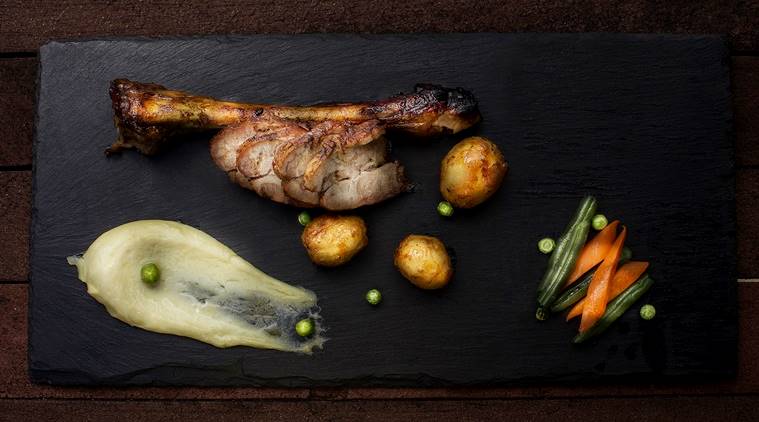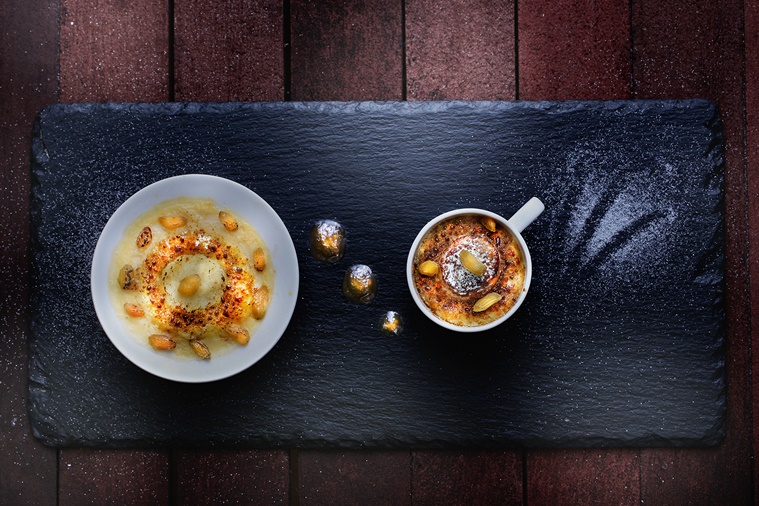In Coorg, regional cuisines bear the imprint of a long-gone era.

I’m not a fan of Anglo-Indian cooking (nor of the omnipresent curry powder that got dunked into its gloopy, bland sauces). Yet, the diverse ways in which English tastes combined with regional ingredients and cooking styles across India during the Raj continue to fascinate me.
On a recent visit to Coorg, I found myself wondering what it must have been like for the British sahibs and memsahibs as they found themselves amidst the seclusion of its forested hills. Watching the mists drift across the plantations of Siddapur in south Coorg, Karnataka, I tried to imagine how these foreigners recreated a taste of British cities and shires in this isolated station, where estates were often 20 to 30 miles apart.
Gazatteer of Coorg, first published in 1870, notes that following the opening of Mercara Estate in 1854 by one Mr Fowler, the first European planter, dozens of extensive estates sprang up in Coorg within a short time. “Here seemed to have been discovered the Eldorado of honest industry in a delightful climate and home-like country,” it notes.
Yet “home-like country” it wasn’t. As the British initiated the planting of coffee in a big way in Coorg, Hassan and Chikmagalur, they were confronted by brutal heat, unfamiliar customs, frightening wild animals, blood-sucking leeches and a lengthy monsoon that could stretch up to six months.

But the interplay between diverse people, larders and culinary traditions led to the development of a distinct culture on the plantations. A lively snapshot of the time appears in Cathleen Ballantyne’s account of plantation life, Plenty Salaams, first published in 1954. Ballantyne arrived in Coorg during the 1880s for a visit and stayed with her husband George, a planter, for 50 years.
Describing the thrum of daily life, Ballantyne writes, “On a coffee estate, the day began early. At 6.30, one was wakened by the clanging of the estate bell, which summoned coolies to muster-roll before starting their day’s work…Then at 7, out on the verandah, chhota hazri — a substantial meal of porridge, eggs and bacon, coffee and fruit. For the dorai (the master), there came the morning round of the estate. For the wife, the walk, or ride, before engaging in the usual household routine, such as the ordering of meals, the weighing out of all the commodities required for the day, and, by using a lactometer, finding out that the milk had not been watered…”
Celebrations served to break the monotony and hardship of plantation life, and Ballantyne’s droll account is replete with instances of tomfoolery and merry-making during parties and picnics. My favourite is a description of a slapstick food fight at a picnic on the banks of Cauvery, where “rolls, potatoes, curry puffs and other eatables were flung about with great dexterity.” The beloved foods of the foreigners came out during these outings. Ballantyne mentions “lobster salad, chicken in aspic, cold saddle of mutton, curry puffs (pastry enclosing curried mince), an assortment of cold sweets”. Milk punch and whiskey flowed, heightening the attractions of these riotous, unending rounds of feasting.
Evolve Back Chikkana Halli Estate in Siddapur, my perch during this visit, has devoted some time to researching this slice of life. Over a meal of pepper water, mutton-ball curry, delicate coconut rice, and pan-roasted roast chicken, chef Naveen Alvares talked about the months of research that led to the planter’s menu currently served at their restaurant Peppercorn. Disappointed with their initial recces of Anglo-Indian restaurants in Bengaluru, Alvares and his team took the help of late Ranee Vijaya Kuttaiah, the author of the highly regarded Cuisine from Coorg, to master colonial-era planters’ dishes. The roast chicken, for instance, is a simple recipe that requires chicken to be marinated with salt, pepper and vinegar, caramelised with a little sugar and then cooked in its own juices in the pan.
No Anglo-Indians remain in Coorg today. In the absence of first-hand testimonies and experiences, reminiscence and nostalgia play a vital role in forming a clearer picture of life in those times. Vivian Rodrigues, whose family has owned coffee and pepper plantations in Pollibetta in Coorg and Saklespur in Hassan district for over a century, painted a vivid picture of the clubs that sprung up during the 19th century as places for the planters and their wives to relax and socialise. “The bar was the most important fixture in the club and the choicest single malts and gin were stocked. The cuisine was obviously British. Local cooks became butlers and were rechristened with British names that were easy to pronounce. We had an Anthony from Ooty who used to be Arokiaswamy!” he recounts.
Bridget White-Kumar, author of several books on Anglo-Indian cooking, says, “The British and Europeans in Coorg ate largely what they ate back home. Yet, over time, some regional influences came into their cuisine and they began eating rice with a curry made with minimal spices.” Various blends of curry powder were concocted, including Bolst’s hot curry powder, which became an instant rage.
Though locals never quite took to curry powder, they inherited an abiding love for baking from the British, and recipes of cakes dating back to the colonial times continue to be religiously followed in homes, clubs and bakeries. “It’s typical in Coorg to come home to a freshly baked cake in the evening,” says Muthu Bopanna, the owner of coffee plantations and a heritage homestay in Madikeri.
Roasts and barbecues are just as beloved. Vancouver-based blogger Shalini Nagappa cherishes her childhood memory of a Christmas spent feasting on roast turkey at her uncle’s farm near Kushalnagar. “What a moment of high excitement it was! And while it was not the exaggeratedly plump, meltingly tender, cartoon bird of my dreams, my uncle’s penchant for adding ‘more butter’, a la Julia Child made it divine,” she writes in her blog, A Cookery Year in Coorg.
After India gained independence in 1947, British planters sold their estates to Kodavas and other south Indians. The food served on these estates today tends to be a mix of traditional Kodava, Mangalorean, Bunt, Lingayat and Chettiar cuisine — depending on the ownership — and their personal eclectic influences.
Former journalist David Housego, writing about the cooking of the Raj, observed that in contrast to the Portuguese, who left a strong culinary footprint on the cuisine of former colonies like Goa, the British largely ignored the rich regional cuisines of India. As a result, no truly great hybrid dishes came out of this East-West encounter. This is evident in Coorg, where the local cuisine remains largely unaffected by British influence. Yet, one still gets a whiff of the time when the intermingling of British, Irish, European and Indian culinary accents created a unique Anglo-Indian aroma across the coffee estates, planters’ clubs and dak bungalows of Coorg.
This article appeared in print withe headline ‘Curry Puff Days’
source: http://www.indianexpress.com / The Indian Express / Home> Eye / by Sona Bahadur / January 20th, 2019

